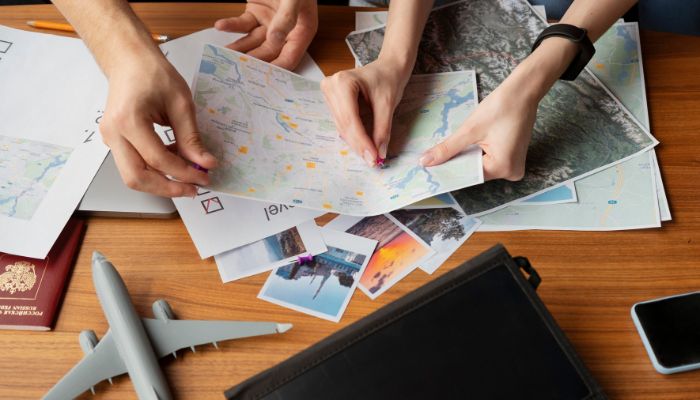Transforming Tourism into a Global Growth Engine
On May 22, 2025, Australia issued a travel advisory discouraging its citizens from visiting India due to cross-border tensions, poor infrastructure, adverse weather, and safety concerns, especially for women. While this advisory highlights persistent obstacles, it also serves as a call to action for India to address these issues and unlock the vast potential of its tourism sector. Despite boasting unparalleled cultural richness and geographic diversity, India with 9.52 million, attracted far fewer international tourists than smaller countries such as Malaysia (20 million) and Singapore (13.6 million) in 2023. This gap reveals a significant opportunity cost for India’s economy and global standing.
India offers an unparalleled tapestry of travel experiences, shaped by its diverse geography, vibrant cultures, and deep-rooted history. Travellers can trek through the snow-capped Himalayas, relax on Goa’s golden beaches, explore centuries-old temples in Tamil Nadu, or experience the untouched natural beauty and tribal heritage of the Northeast. From the Mughal-era grandeur of Rajasthan’s forts to the colonial charm of Kolkata, and from the fiery street food of Delhi to the coconut-infused cuisine of Kerala, each region tells its own compelling story. However, this rich potential remains underutilised. A 2023 report by the Ministry of Tourism estimated that less than 30% of tourist circuits in India have adequate road connectivity, reliable sanitation, and safety infrastructure—critical gaps that limit accessibility and visitor satisfaction. Unlocking India’s full tourism promise will require targeted investments to transform these diverse yet underserved destinations into world-class, visitor-friendly experiences.
To accelerate the growth of its tourism sector, the Indian government has launched a series of strategic initiatives focused on infrastructure development, cultural promotion, and experiential travel. These efforts are already yielding measurable results. In 2023, India recorded 9.2 million foreign tourist arrivals, marking a 48.6% increase over the previous year. Domestic tourism also surged, crossing 2.5 billion visits, as improved connectivity and thematic travel experiences attracted more travellers across regions. These gains highlight the early success of targeted investments and policy reforms aimed at making India a more accessible, engaging, and diverse destination for global and local tourists alike.
Related Reads
Industry Outlook: Agritech in India
Key Government Initiatives to boost Tourism
- Swadesh Darshan Scheme 2.0
Focused on sustainable and integrated tourism development, this scheme has approved 40 projects across 23 states with a total investment of ₹3,295.8 crore (~$440 million). Projects target upgrades in road connectivity, sanitation, digital integration, and overall infrastructure in major tourist circuits. - PRASHAD (Pilgrimage Rejuvenation and Spiritual Augmentation Drive)
Aims to enhance infrastructure at religious tourism sites across India. Given that over 40% of India’s international tourists travel for religious purposes, the scheme plays a vital role in improving accessibility, safety, and visitor amenities at key spiritual destinations. - Bharat Gaurav Trains
A theme-based tourism initiative that has operated 325 trips as of January 2025, serving 191,033 tourists. These trains connect various cultural and heritage sites across India, boosting domestic travel and promoting India’s rich historical narratives.
India 2030: Transforming Tourism into a Global Growth Engine
India’s tourism sector, while growing steadily, continues to be held back by persistent structural challenges that undermine its vast potential. Many emerging and rural destinations still lack basic infrastructure such as clean sanitation, reliable electricity, and quality accommodations—critical components of a satisfactory travel experience. Safety remains a major deterrent for international visitors, especially women; India ranks 116th out of 163 countries in the 2024 Global Peace Index, highlighting the need for urgent reforms. Furthermore, India’s digital infrastructure is uneven—less than 40% of tourist sites currently offer integrated services like online ticketing and multilingual information, limiting convenience for both domestic and foreign tourists. Adding to these issues is a narrow marketing approach that largely promotes already established tourist circuits, leaving culturally rich but lesser-known destinations underexplored. Without addressing these barriers holistically, India risks underdelivering on what could be one of the world’s most powerful and diverse tourism portfolios. Realising this potential demands a focused, multi-pronged strategy.
Key Action Points to Unlock Growth:
- Holistic Infrastructure Development
Invest ₹10,000 crore (~$1.3 billion) over the next five years to enhance road connectivity, sanitation, and accommodations. Aim to bring 90% of tourist circuits up to national standards by 2030, per Ministry of Tourism goals. - Enhanced Safety Protocols
Improve policing in tourist zones, launch a centralized tourist safety app, and run public awareness campaigns focused on women’s safety to enhance global perception and traveler confidence. - Accelerate Digital Transformation
Ensure widespread implementation of integrated ticketing, multilingual mobile apps, and virtual guides across tourist sites by 2027. Encourage AI-based tools for personalized itinerary planning. - Diversify and Target Marketing
Promote lesser-known destinations, heritage festivals, and niche travel experiences like medical, spiritual, adventure, and eco-tourism. Use data-driven campaigns, influencer partnerships, and international roadshows to expand global reach. - Skill Development and Community Engagement
Train 500,000 local residents in hospitality, sustainable practices, and language skills by 2030 to boost local employment and enhance the quality of tourist interaction. - Sustainability and Environmental Conservation
Mandate eco-friendly tourism policies, especially in biodiversity-rich and heritage-sensitive zones, to ensure long-term viability and minimize environmental impact.
India’s tourism sector stands at a pivotal crossroads. Despite steady growth and promising policy initiatives, systemic challenges continue to constrain the full expression of its potential. With its unparalleled cultural richness, geographic diversity, and deep historical legacy, India has all the ingredients to emerge as one of the world’s foremost travel destinations. But this vision can only be realized through targeted infrastructure development, a renewed focus on safety and sustainability, and a more inclusive, digital-first approach to tourism.
As historian William Dalrymple once observed, “India is the one land that all men desire to see, and having seen once, by even a glimpse, would not give that glimpse for all the shows of all the rest of the globe combined.” This sentiment reflects the profound allure India holds for the world—a land of layered civilizations, spiritual depth, and living traditions. By nurturing this heritage through strategic investment and thoughtful promotion, India can transform its tourism sector into a global force for economic growth, cultural diplomacy, and sustainable development.






